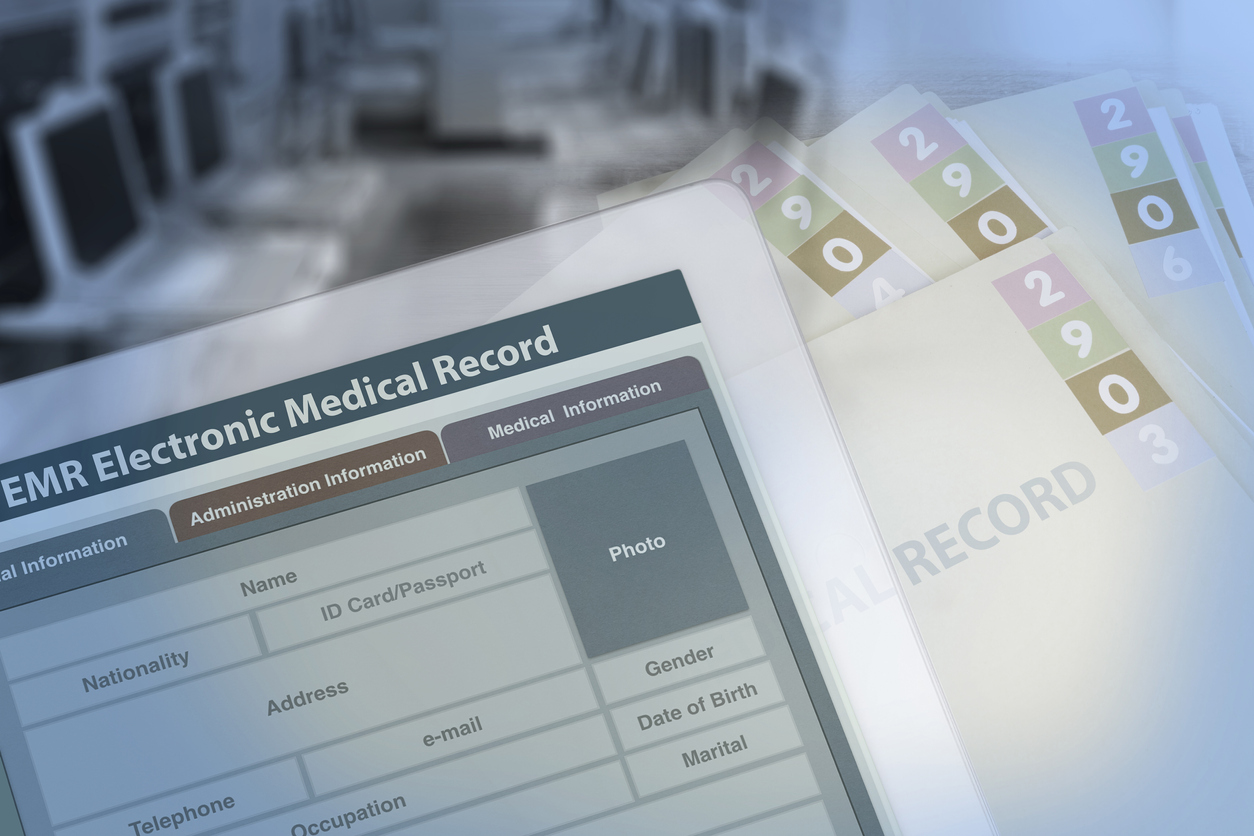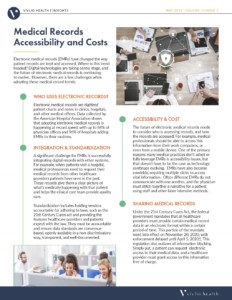Electronic medical records (EMRs) have changed the way patient records are kept and accessed. Where is this trend headed? Digital technologies are taking center stage, and the future of electronic medical records is continuing to evolve. However, there are a few challenges when adopting these medical record trends.
As medical professionals navigate one health challenge after another, the future of electronic medical records and the integration, standardization, accessibility, cost, and ease of use will continue evolving. In 2021, we can expect to see continued growth in these areas as electronic health records and interoperability collide.
Who uses electronic records?
Electronic medical records are digitized patient charts and notes in clinics, hospitals, and other medical offices. Data collected by the American Hospital Association shows that adopting electronic medical records is happening at record speed, with up to 84% of physician offices and 96% of hospitals adding EMRs to their routines.
Integration and standardization
A significant challenge for EMRs is successfully integrating digital records with other systems. For example, when patients visit a hospital, medical professionals need to request their medical records from other healthcare providers patients have seen in the past. These records give them a clear picture of what’s medically happening with that patient and helps the clinical care team provide quality care.
Standardization includes holding vendors accountable for adhering to laws, such as the 21st Century Cures act and providing the features healthcare providers and patients expect with the law. They must be accountable and ensure data standards are consensus-based, openly available in a non-discriminatory way, transparent, and well-documented.
Accessibility and cost
The future of electronic medical records needs to consider who is accessing records, and how the records are accessed. For example, medical professionals should be able to access this information from their work computers, or even from a mobile device. One of the primary reasons many medical practices don’t adopt or fully leverage EMRs is accessibility issues, but that doesn’t have to be the case as technology continues evolving. EMRs have also become unwieldy, requiring multiple clicks to access vital information. Often different EMRs do not communicate with one another, and the physician must stitch together a narrative for a patient using staff and other labor-intensive methods.
Sharing medical records
Under the 21st Century Cures Act, the federal government mandates that all healthcare providers must provide certain medical record data in an electronic format within a certain period of time. This portion of the mandate went into effect on November 20, 2020, with enforcement delayed until April 5, 2021. This regulation also outlaws all information blocking. Simply put, a patient can request electronic access to their medical data, and a healthcare provider must grant access to this information free of charge.
Ease of use
Ease of use is a constant battle among medical professionals across the board. For example, in addition to the hassles of accessing information, there are discrepancies in quality from one software system to another. If using this software isn’t easier than managing paper files, medical professionals wonder why they should adopt it in the first place.
Improving the ease-of-use means reducing documentation requirements, standardizing data across multiple platforms, and leveraging workflow automation technology to help healthcare providers avoid clerical tasks. That way, they and their staff are spending more time focusing on patient care.
Final Thoughts
As medical professionals navigate one health challenge after another, the future of electronic medical records and the integration, standardization, accessibility, cost, and ease of use will continue evolving. In 2021, we can expect to see continued growth in these areas as electronic health records and interoperability collide.




